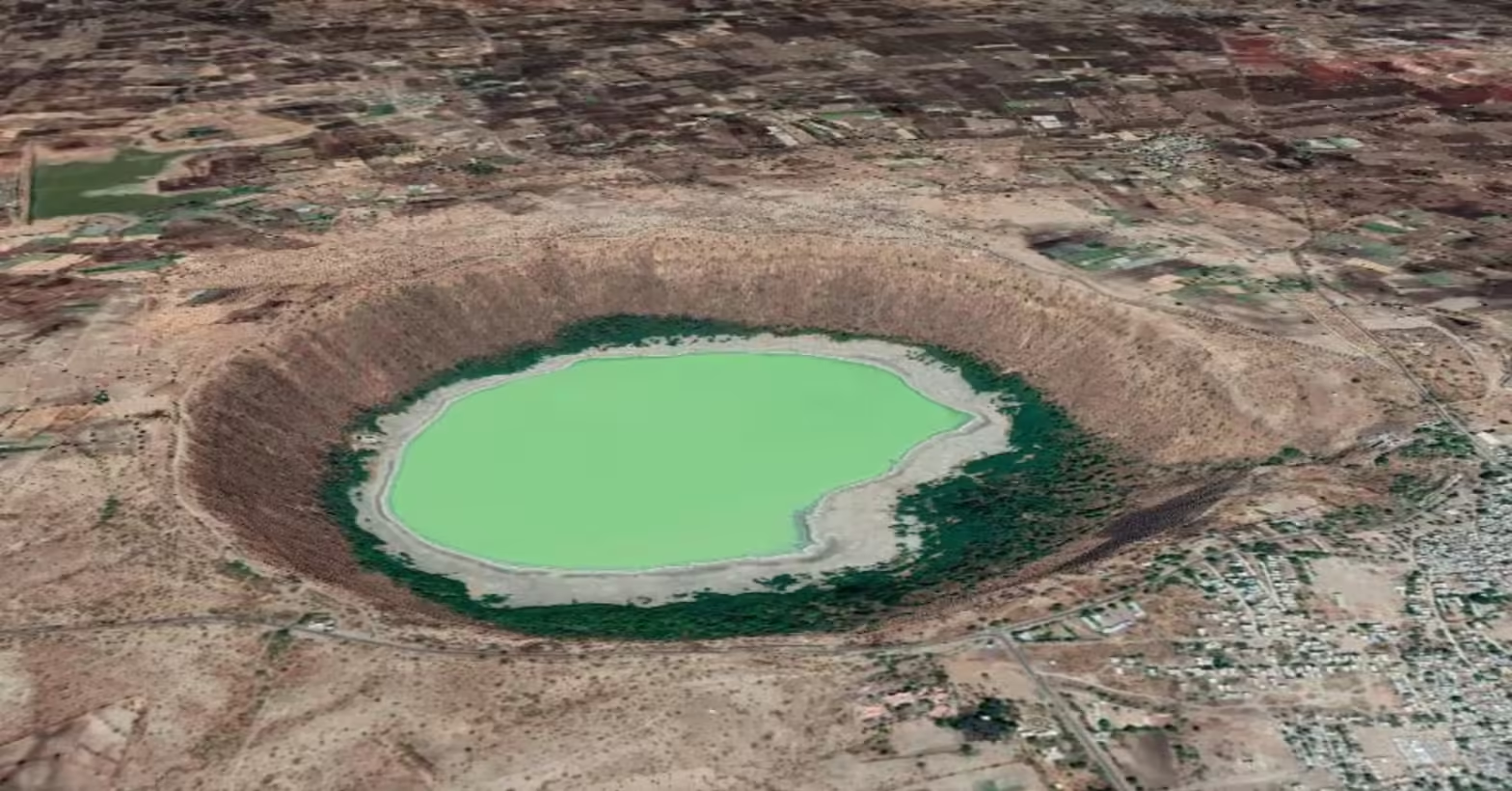In the vast desert of Kutch district, northwest India, where salt is harvested in colorful rectangular ponds, a circular feature in the otherwise flat Banni Plains has intrigued scientists for over a decade, with suspicions that it resulted from a meteorite impact remaining unconfirmed until recently. This crater, named Luna after the nearest village, measures 1.1 miles (1.8 km) wide and about 20 feet (6 m) high, with the size of meteorite craters typically being 10 to 20 times the size of the impacting meteorite, leading Kerala University assistant professor Sajin Kumar to estimate the meteorite’s size at between 650 to 1,300 feet (200 to 400 m) wide.
Scientists have now determined that this crater formed around 7,000 years ago, making Luna the most recent confirmed meteorite impact, as evidenced by the shallow depth of the samples taken from the site, which were around 4 inches (10 cm) deep. Previously, the youngest known crater was the Yilan Crater in northeast China, dated to between 47,000 and 53,000 years old. Some had speculated that the Luna crater might be a collapsed salt dome or a geological fault, but a comprehensive study conducted from 2019 to 2022 confirmed the impact origin through the discovery of minerals that are typically formed under the extreme temperatures and pressures of a meteorite impact. These minerals include fayalite, hercynite, kirschsteinite, ulvöspinel, and wüsite, and are associated with meteors, alongside unusually high concentrations of iridium, a rare element on Earth’s surface but common in iron meteorites, suggesting an extraterrestrial origin.
Researchers collected samples in May 2022 during a dry period, as the area is often submerged for 11 months each year, with Dr. Kumar describing the difficulty of obtaining samples due to the marshy terrain. The study, published in the journal Science Direct, involved several institutions, including the CSIR-National Geophysical Research Institute, Geological Survey of India, Kachchh University, National Centre for Earth Science Studies, Physical Research Laboratory, and the University of Kerala. Carbon dating of plant remains beneath the crater debris revealed they are as old as 6,905 years, leading researchers to conclude that Luna is the largest crater resulting from an iron bolide in the last 10,000 years, with a bolide being an exceptionally bright meteor.
NASA also took an interest in the crater, capturing an image of the site with their Landsat 8 satellite’s Operational Land Imager on February 24, shortly before the Indian scientists announced their findings. The distinctive crater is visible from space, and previously, India had three known impact craters: Ramgarh in Rajasthan, Lonar in Maharashtra, and Dhala in Madhya Pradesh, with Luna now being the fourth. The study team hopes this discovery will encourage more research into craters and planetary science in India.
The Luna meteorite, likely composed mostly of iron or a combination of iron and rock, is the largest to strike Earth in the last 50,000 years. For comparison, the meteorite that caused the extinction of the dinosaurs 66 million years ago was about six miles (10 km) wide, over 25 times larger than the Luna meteorite. Dr. Gordon Osinski of Western University’s Department of Earth Sciences likened the impact to a nuclear bomb without the radioactive fallout, with the shockwave felt up to 3 miles (5 km) away and the dust likely dimming the sun for days.
The Indus Valley (Harappan) civilization, contemporary with the Luna impact, might have been affected, as the civilization, which had settlements nearby, began to decline around 1900 BCE, with most cities abandoned by 1700 BCE. Further research might reveal the impact’s effects on ancient human populations. Impact craters are relatively rare on Earth, with the Earth Impact Database listing fewer than 200, as many meteorites land in the sea or their land impacts are erased by geological processes. Advances in satellite technology are likely to uncover more craters, including in previously inaccessible polar regions now exposed by climate change, such as the Hiawatha Glacier in Greenland.
Meteorites, mostly originating from the asteroid belt between Mars and Jupiter, are 4.56 billion years old, older than any Earth rocks. They reach Earth after being dislodged from their orbits by collisions or gravitational forces, and some meteorites may also come from the moon or Mars, ejected by impacts on those bodies. For a precise location, Luna is at 23°42′16″N 69°15′35″E.





















